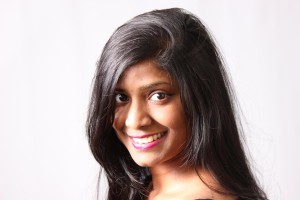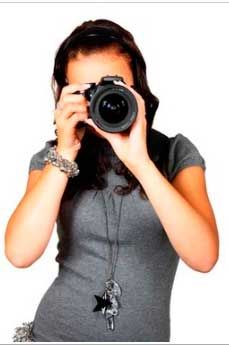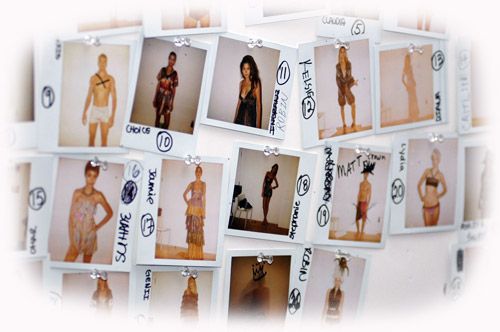As a part of the process of “warming up” and getting comfortable and relaxed in front of the camera, I sometimes get models to start pulling some silly faces.
(click image for detail)
From the BlogContact Andy
As a part of the process of “warming up” and getting comfortable and relaxed in front of the camera, I sometimes get models to start pulling some silly faces.
(click image for detail)
 A Headshot is the single most important photo for any models portfolio. The headshot is often the first thing a potential client will see and is what encourages them to take a closer look at your portfolio, so getting your headshot right is critical.
A Headshot is the single most important photo for any models portfolio. The headshot is often the first thing a potential client will see and is what encourages them to take a closer look at your portfolio, so getting your headshot right is critical.
This post provides some quick tips on how you can get the most out of a headshot photo session.
If you are looking for modelling or acting work, your modeling portfolio will be what sells you when you are looking for jobs. It can make or break your career, so doing it “right” is important.
Here are some quick tips on how to go about creating a modelling portfolio (without costing a fortune).
 1. Find a Photographer
1. Find a PhotographerDo a Google search or look in your phone directory for local photographers. Check out their websites (if they don’t have an online portfolio you should wonder why) and find a couple that you like the “feel” of. You could also contact local agencies to see if they are able to recommend any. If you don’t have much (or any) to spend on a photographer you could look for Time for Print (TFP) photographers. (See What is Time for Print) .
Contact your selected photographer/s and ask about things like pricing, format of the film/digital photos and how long you usually have to wait between the shoot and getting the photos. Also, ask to see a sample of their work.
Even if you think you are capable of doing this yourself – DON’T do it. You will have enough to do during the shoot to worry about makeup. The photographer may be able to organise this… or if budget is tight – maybe bring a friend who can do it, and keep you looking pristine during the shoot. Just because you have a makeup artist doesn’t mean it should be over the top… less is usually more – unless you are specifically looking for a dramatic look.
Look through fashion magazines and clothes catalouges to find find poses you like. Cut them out and paste them into a book to bring along top the shoot for inspiration. Practice these poses in front of a mirror.
Decide on a number of looks you want to do. Ideally, you should pick at least three and they should demonstrate a wide variety (so not all jeans and t-shirt shots!!). If you have a special skill or ability (e.g. ballet , or rock climbing), you may even want to consider taking some photos to showcase this skill. Prior to the shoot you should also discuss poses, makeup, outfits, locations and the “looks” you want to achieve with the photographer.
Keep your hair, skin and nails in good condition in the run up to the shoot. If you need a hair cut, get one
Once you have agreed on what what clothes to wear, make sure they are clean and put to one side for the shoot well in advance. Also consider what shoes/accessories will be needed, and check with the photographer that there is a suitable place to change.
 Enjoy your photoshoot! Listen carefully to what the photographer wants. Don’t worry about being nervous – this is normal, and the photographer may be nervous too.
Enjoy your photoshoot! Listen carefully to what the photographer wants. Don’t worry about being nervous – this is normal, and the photographer may be nervous too.
 As a photographer, I am often asked by models and actors for advice on the types of “look” that they should be going for, when creating photos for their modelling/acting portfolios.
As a photographer, I am often asked by models and actors for advice on the types of “look” that they should be going for, when creating photos for their modelling/acting portfolios.
I usually turn the question back on them an ask them what type of modelling/acting work they are looking for.
The purpose of a portfolio is to showcase your specific talents, but before putting together a modeling portfolio, it is important to know what type of modeling you can do, and perhaps more importantly, what types of modelling you want to do.
A portfolio should showcase the type of work you want to do, not so much the type of work you have done.
In order to appeal to a wider range of clients, you should include a variety of different “looks” in your portfolio. It may seem sensible to put in a little of everything to showcase your versatility but if you want to target agencies,casting directors,and commercial clients you should show only your strongest images in specific categories.
Ideally you portfolio should be focused to show that you can be very good at modeling in a few related genres – although, if you are looking for a variety of different styles of work, there is no reason you couldn’t create multiple portfolios targeted for specific genres.
Because prospective clients are probably reviewing hundreds of portfolios, it necessary to get their attention.
Pay very close attention to the quality of the photos you choose to include in your portfolio. These photos need to impress agencies and clients alike and make you stand out from the rest. So always aim to project the best possible image of yourself. Don’t include extra photos just because you can… every photo needs to be FANTASTIC – any weak images will weaken the entire portfolio.
Less is more – It is better to have fewer photos that are GREAT, than having more photos that are of poorer quality. A beginner model (especially when you are presenting yourself to a new agency) should aim for a portfolio with 6 – 12 photos. As an established model, you’ll have more experience and are expected to have a wider diversity of looks, so your portfolio should have more – anywhere between 10 and 25 photos.

Always be aware that your modelling portfolio is not only to show your good looks, but it should also demonstrate your ability to portray different characters, age ranges and personality. You should aim to include a selection of the following types of photos in your portfolio:
Understanding what types of photos NOT to include can be every bit as important as deciding what photos to include. Here are some examples of photos which you should probably avoid in your portfolio :
In future posts we plan to offer more detailed information about the types of photos whioch could be included in different types of portfolios (e.g. High Fashion, Promo Model, Catalogue, Agency, Commercial, etc…)
Copyright © 2025 · PortPholio (based on Minimum Child Theme) on Genesis Framework · WordPress · Log in